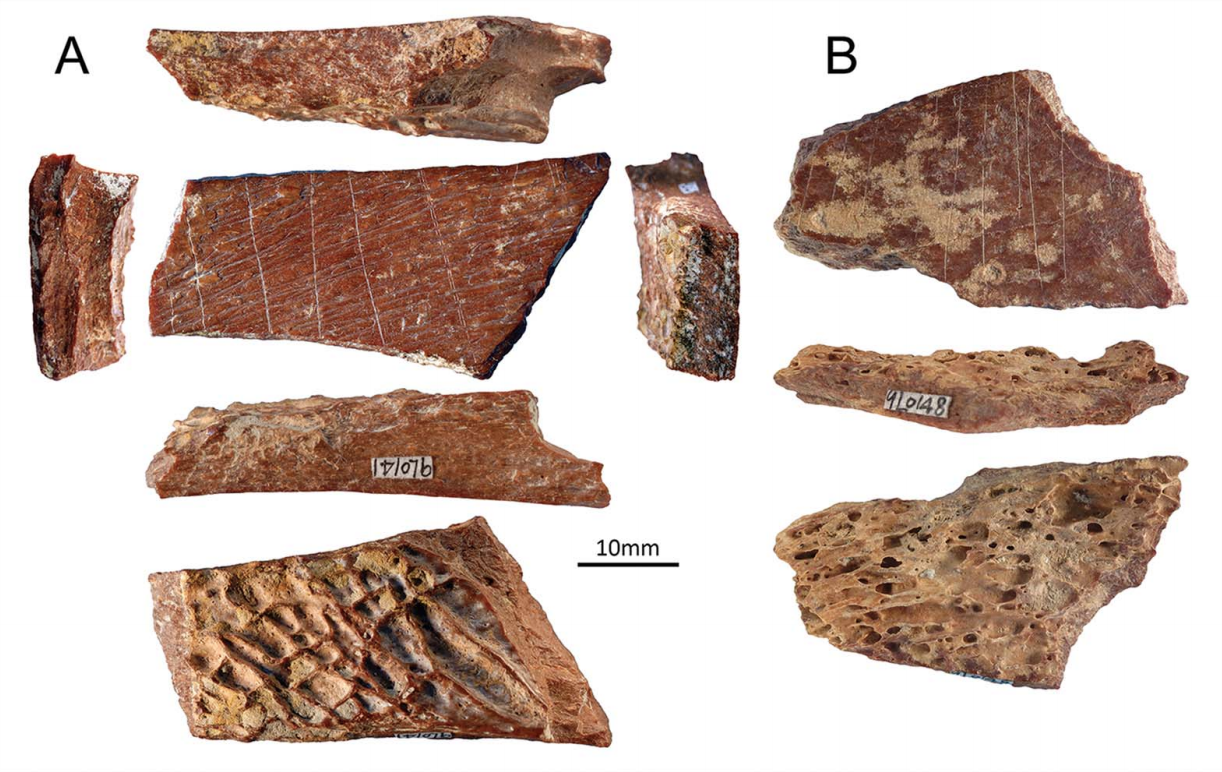
Abstract patterns carved on bone fragments discovered in China could be the oldest art ever made, dating back to between 105,000 and 125,000 years ago.
The marks on two bones were found at a site in Henan Province thought to be populated by Denisovans, an extinct species or subspecies of ancient humans, according to a new study in the Cambridge University Press journal Antiquity. The markings on the weathered rib bones contain traces of ochre on one specimen, the earliest evidence of pigment’s use for decorative purposes.
The newly discovered artworks pre-date even the 73,000-year-old markings—thought by some to be abstract drawings—found last year on a rock excavated from a South African cave, and previously thought to be the earliest-known example of human artistic activity.
“This discovery indicates that the production of abstract motifs, possibly used for symbolic purposes, was an integral part of the cultures developed by human populations who lived in China contemporary to the emergence of our species, Homo sapiens, in Africa,” Luc Doyon, one of the study’s authors, told the Indian Express.
Engraved human bone fragment found in China’s Henan Province. Image courtesy of Francesco d’Errico and Luc Doyon.
Researchers say it’s unlikely that the carefully engraved markings were accidental or utilitarian, which means they could be evidence that the early hominids were capable of symbolic thought and communication, capacities once thought to be exclusive to modern humans. In 2014, archaeologists found 39,000-year-old carvings created by Neanderthals in a Gibraltar cave, proving that these supposedly primitive people made art. More Neanderthal art—a cache of 65,000-year-old cave paintings—were identified in Spain last year.
The first evidence of the Denisovans’ existence was discovered in Siberia in 2010 when bone fragments were found in a cave along with fragments of a stone bracelet. The Chinese site, in the town of Lingjing, near Xuchang, was discovered in 1965 and has been home to continuous excavations since 2005. The engraved bones were uncovered in 2009, and the markings were first noted in 2016.
“More than 30,000 bone fragments have been unearthed from the site,” added co-author Li Zhanyang, speaking to Chinese publication XinhuaNet. “But I had seen none with such engravings before.”